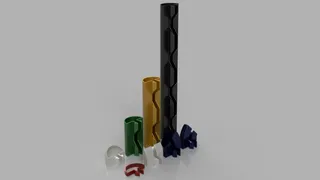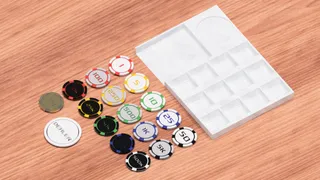Hollow D6 Dice (with builtin support)
Description
PDFSimply a hollow, rounded D6 dice.
It should be printable without any support at all. Below the faces, there are built in support bridges. Below every face, so the weight is somewhat distributed equally. It surely isn't casino-perfect of course.
Designed and printed in 16mm size, 2mm holes, 1mm walls - it sums up to just under 2 grams of material. Pretty bouncy when rolling on hard surfaces.
Should scale up to... wherever your printer manages to reliably build a straight bridge.
Successfully tested it at 250% scale. (40mm)
It's just one of my first projects learning to built own models, in Fusion. But hey... why not share it. Go ahead, post a make. :)
But maybe it could also work as a "benchmark" for bridging.
Update 2021-06-28 [
Well to my big surprise this ended up as a part of the print of the week series :D
And by total coincidence i happened to have revisited several of my first designs, a few moths back. This Model also was redone back then to practice what i've learned in fusion since i first started.
So, kind of to celebrate the video… here's version 2 for you. That i eventually had not planned to release at all. (16mm Version at only 1.55g)
Thanks Prusa Team! :D
]
Print instructions
Notes:
- Size is most likely only limited by your printers ability to build bridges.
- Guess it's not a great idea to go below 15mm since the holes would get supertiny.
- I reccomend printing it 6-face down, this way only one hole has to be placed onto top-Z layers support bridge. (but every way other "should" be fine too)
- Choose enough walls/perimeters as well as top/bottom layers to have them solid.
- don't do supports, you will not be able to remove them from the inside ;)
Tested: 16x16x16mm: 0.3 Nozzle, 0.12 layer height 40x40x40mm: 0.8 Nozzle, 0.4 layer height
Post processing
If everything goes right, there is no additional step needed, since all holes and faces rely on the built in support and are printed kind of "wysiwyg" from the STL. No need to cut or drill any support, or bridges. Faces: Sanding, smothing, polishing (or whatever you like to do with your prints for a nicer visual result) is optional.
Tags
Model origin
The author hasn't provided the model origin yet.




